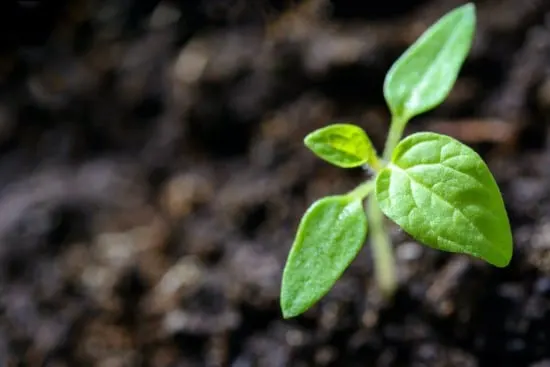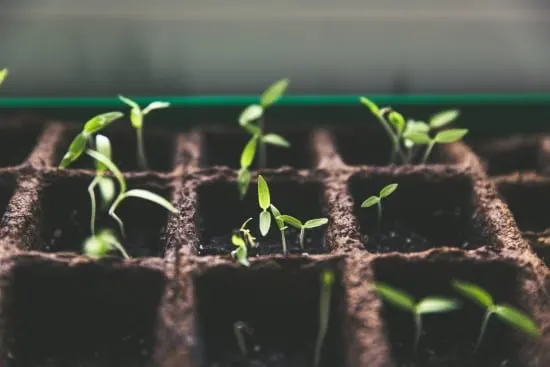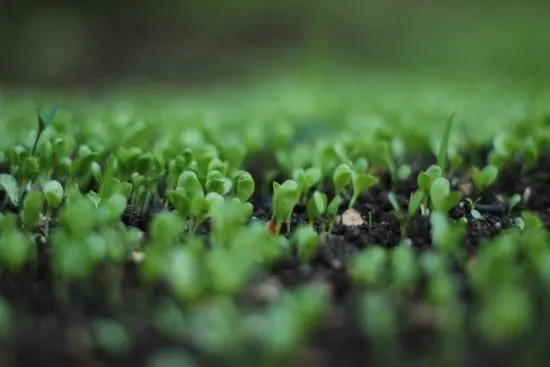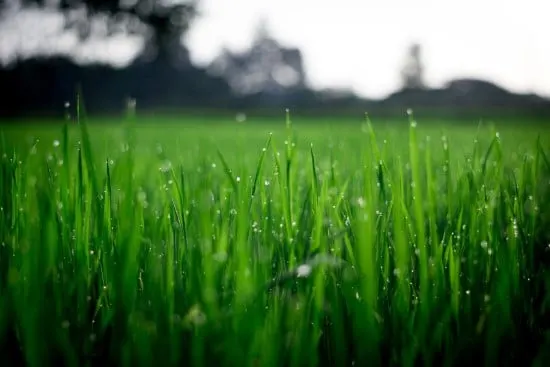We’ve all been there when we fail from time to time, trying to have healthy sprouts. While seed germination is a breeze to experts, it’s not that easy on amateurs and beginners at all, mainly if you undertake it without the help of seed germination blankets.
Yet, even when you utilize these beneficial mats, many questions still linger inside your head. When to remove seed germination blanket is one of them. Thus, if you’re looking for the answer, today’s post is for you.
Overview Of Seed Germination Blankets
Grass seed germination blankets (sometimes referred to as lawn seed blankets or erosion control mats) are among the best solutions (if not the best already) for seed germination out there. Indeed, it’s much more beneficial than spreading grass seeds straight onto the field.
Seed germination blankets do not always arrive pre-seeded. Indeed, one could easily spot the “plain” variants, which solely protect the sown seeds and assist in developing the ideal conditions for optimal sprouting and development.

As a result, these bare mats are an excellent choice if you only need to cover up a couple of spots or if you intend to cultivate a specific sort of grass.
Of course, should you choose an unseeded grass mat, it’s still advisable to thoroughly and uniformly sow the seeds manually into the soil that previously got treated with proper fertilizers.
Seed germination benefits
Lawn seed blankets aid in the sprouting of freshly introduced seeds on established grass fields. Indeed, these erosion control mats, reported by DuPont Garden Products, can increase the rate of lawn germinating seeds by up to 200%.
Moreover, if you’re a gardening lover, you’ll know it’s almost impossible to avoid clumps and bare spots while scattering grass seeds. And when an overly thick clump of seeds germinates, they will smother one another, yielding bad results.
In this case, a seed germination blanket is beneficial: A pre-seeded lawn seed mat provides more breathable and even patches, evenly distributing the seeds.

Also, these wraps sit on top of lawn seeds, shielding them from erosion, weeds, runoff, even greedy pests.
And how can they do that? Simply put, they locate the seeds on site, preventing them from getting rinsed away by rainfall, devoured by birds, or messed up by the dogs.
Besides protecting the seeds, lawn seed blankets also protect the topsoil from being flooded or swept away, thus the alternate term “soil erosion mat/blanket.”
At the same time, the blanket keeps the rainfall from damaging the seeds, but it also retains the appropriate hydration level for the best sprouting process.
An additional (significant) benefit is that this mat makes it difficult for weeds to develop surrounding the young grasses. Weeds thrive in the fertilized soil and frequent irrigation that lawn seeds require, and a germination blanket means keeping them at bay.
Seed germination blankets’ setbacks
Their primary downsides are the higher expense (a conventional seed germination blanket charges relatively high) and the limited seed varieties to select from.
When To Remove Seed Germination Blanket
The good thing is that often these lawn mats are biodegradable and won’t require to be removed. And fortunately, all forms of pre-seeded and bare lawn blankets boast a greenish appearance, so they don’t seem out of place in your garden as the new grasses develop.

At the same time, removing these nets isn’t advisable at all. Indeed, lifting them might be risky since the seeds often cling to the blankets, causing harm to the new grasses. Thus, the safest option is to allow the mats to degrade over time.
But what if I still want to remove them? Wait until you can mow the lawn once or twice post sowing, typically about 7 to 8 weeks. That’s typically the ideal point to remove the mats – if you have to.
How To Use Seed Germination Blankets
Utilizing seed germination blankets is a piece of cake. Indeed, all you have to do is follow our effortless 7-step guide below!
- First and foremost, use a measuring yardstick and calculate the spot where you want to plant fresh grass seeds. Then, take scissors and snip the erosion control mat according to the lawn patch dimensions.
- Afterward, manually eliminate any weeds and withered grasses from the region you plan to replant. Employ a manual spreader, add an equal amount of plant starting fertilizer to the designated site.
- Next, rake your patch to soften the topsoil and allow the seeds to get the most touch with the ground. This action also aids in the absorption of the starter fertilizer for the greatest outcomes.
- Then, load the hand spreader 1/2 with seeds before distributing these seeds uniformly all across the selected site. If required, introduce additional seeds.
- Lay the trimmed seed blankets, net face upwards, on top of the seeded patch. Fold the borders of the blankets by 3 or 4 inches if your area calls for more than one.
- Finally, mount the mat to the ground using biodegradable stakes: Insert a stake every 3ft on every border and water them adequately.
If you intend to replant the whole yard, increase the size by the square footage. Buy your blankets based on this measurement. Then, start unrolling the seed mat from the furthest part of the field and work your way around until the whole lawn gets blanketed.
Can I Use A Seed Blanket On An Existing Lawn?
Of course, you can always utilize these mats on existing patches. This blanket will ensure that your germinating plants develop effectively even when you possess any bald or sparse spots on your yard that you wish to fill.
If you don’t have this blanket: it’s always applicable to substitute it with hay. Unfortunately, it is not as failsafe as a mat and does not provide a similar safeguard against erosion.
How Often Should I Water My Germinating Mat?
The guidance for watering freshly planted seeds is straightforward yet complex at the same time. You only have one shot to germinate seedlings properly. A water shortage will destroy the sprouting, while excessive watering might provide less-than-ideal outcomes.
For newly sowed seeds, water the area at least twice per day, preferably more. Also, avoid leaving the grass thoroughly dry or drenching or inundating your yard if your seeds are sown on bare soil. The golden rule of thumb is enough water only.
Repeatedly watering your soil can cause significant root infections, including Pythium Blight, which can destroy the plant’s stems. Most of the time, plant-related disease concerns are much worse in humid conditions than in dry ones.

According to the climatic conditions, reduce irrigation to once every 2-3 days after the grasses reach a couple of inches. Even little sprouts might succumb if the heat rises and the ground runs dry. Soil dries quicker in scorching, dry climates than in humid climates.
When the grass gets to the trimming level (about 3-3.5ft), continue watering thoroughly but less frequently until the soil gets saturated to a depth of 4 inches. Once root development has begun, less often and deeper irrigation will encourage more substantial root formation.
Conclusion
Now you know when to remove seed germination blanket. Although it’s possible, it isn’t advisable to take your mats out of the patches. These nets are all biodegradable and will eventually biodegrade. However, if you still want to remove them, make sure to do it carefully. Good luck!
